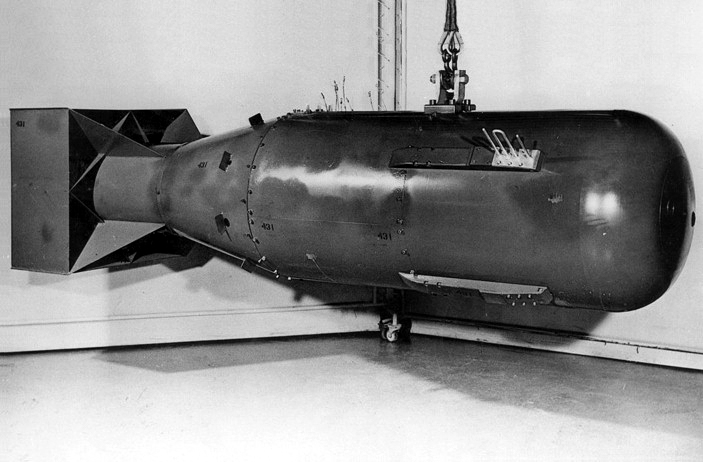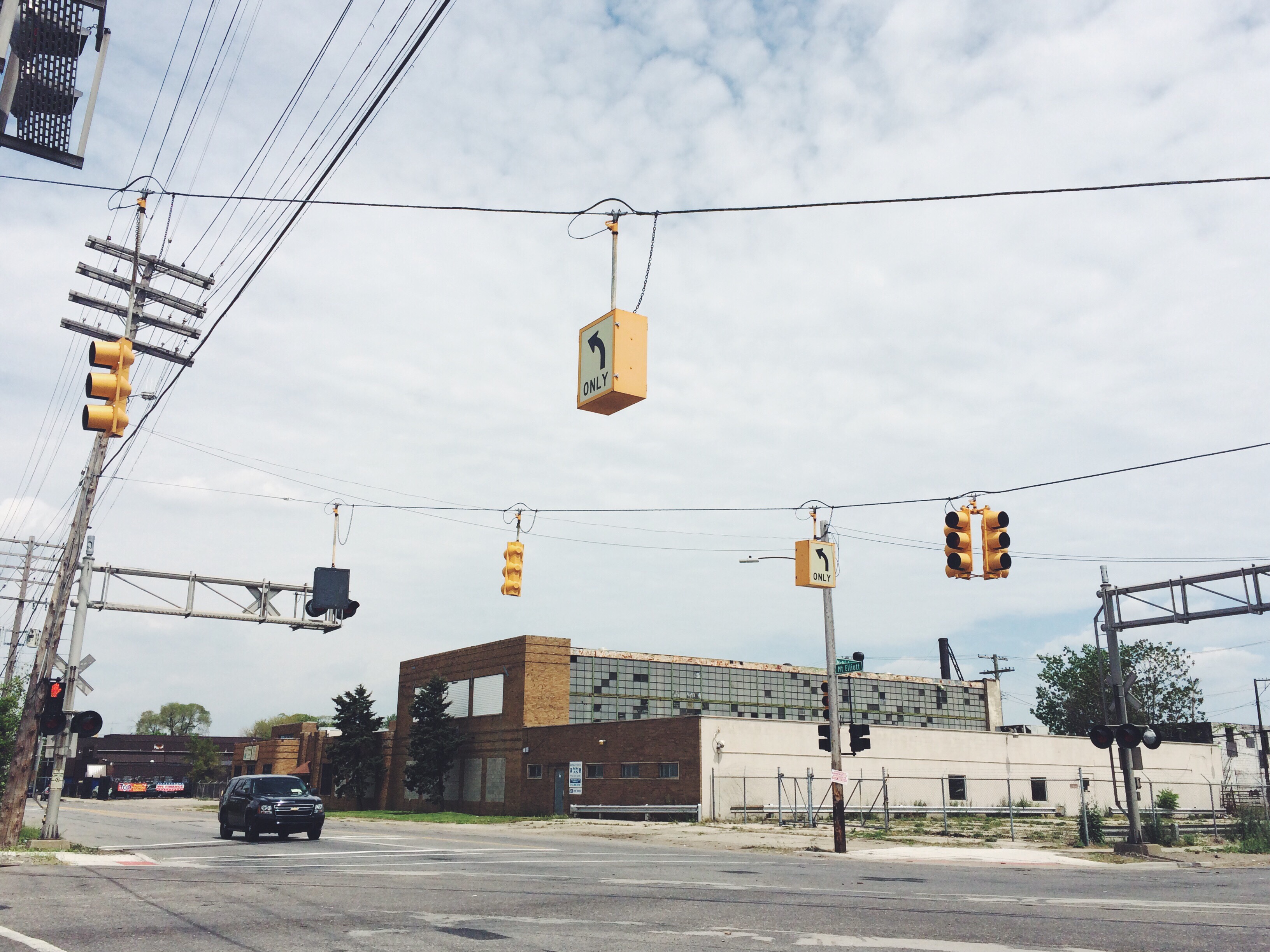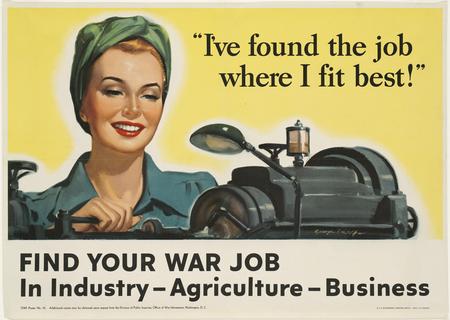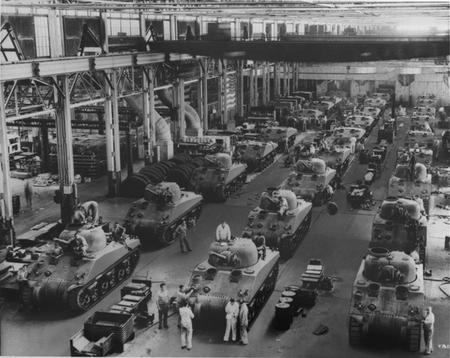The Detroit Origins of Atomic Bomb “Little Boy”
Two out of the three locations to manufacture the atomic bomb dropped on Hiroshima were in metro Detroit.

At the corner of Mt Elliott and McNichols, in Northeast Detroit, there’s an unassuming machine shop that sits in the middle of an industrial landscape.

This is where, 70 years ago, a different company manufactured some of the parts for the atomic bomb dropped on Hiroshima.
The manufacturing for “Little Boy,” as the atomic bomb was codenamed, was split strategically among three locations so no one would have the complete design-
- The Naval Gun Factory in Washington, DC
- Expert Die & Tool in Hamtramck, Michigan
- The Naval Ordnance Plant in Centerline, Michigan
Why Detroit?
Roger Meade is a retired archivist historian for Los Alamos National Laboratory, the facility tasked with designing the two atomic bombs used on Japan.
“Los Alamos was filled with scientists, a few engineers, but no one who could produce anything,” he says. “And so they looked at Detroit for two reasons, one it was a huge labor pool for skilled labor particularly machinists and draftsman … and some of it was just the capacity to work on large pieces of steel.”
To give a sense of scale, the hemisphere, or tip, of the bomb was five feet in diameter.
Meade says Michigan played a significant role in manufacturing not only “Little Boy”, but also the atomic bomb’s counterpart “Fat Man” used in Nagasaki.
But Michigan manufacturers didn’t know what they were working on.
“It was a tap dance of sorts about – here are these specialized designs and drawings, they’re for the war effort, and by the way don’t be talking about it,” says Meade. “But at no time would there have been a link to the Manhattan Project per se.”
Everything was extremely secretive. The Manhattan Project, which was the name of the federal effort to develop the nuclear weapons, would set up dummy sites labeled “War Department,” in various industrial cities.
Presidents Franklin Roosevelt and Harry Truman heavily solicited the support of every manufacturer of consumer goods.

“I appeal to the owners of plants—to the managers—to the workers—to our own Government employees—to put every ounce of effort into producing these munitions swiftly and without stint …
We must be the great arsenal of democracy.” – President Franklin Delano Roosevelt, 1940
Greg Sumner, Professor of History at University of Detroit Mercy and author of Detroit in World War II, says Detroit answered this call like no other city.
“Every industrial enterprise from the big auto companies … and every little tool and die shop it seems converted almost overnight to war production.”
And like that, the city came out of the Great Depression with a bang.

“It was just the ultimate boom town of World War II and there was a population explosion. Jobs were plentiful. There were streetcar systems, some of them running one per minute, loaded with war workers, soldiers. Detroit was really hopping and what made it happen was war work.”
Sumner says Detroiters were making good wages. But they also felt they were part of something important.
“Pearl Harbor was just such a shock to the country that I think 98% of the public was behind what needed to be done.”
The Beginning of the Atomic Age
While the US devoted thousands of personnel and millions to the development of this revolutionary weapon – the atomic bomb – it was really only the beginning.
“This was the first weapon people could cobble together, it had duck tape on it,” says Robert Jacobs, nuclear historian and professor at Hiroshima Peace Institute. “Once it was used and we saw that it worked that effectively, within 10 years we had weapons that had capacities to kill way beyond anything that you could understand by looking at this city.”
Jacobs says at the time of the bombing, Hiroshima was primarily populated by women, children and elderly people, because most of the adult men had gone off to fight.
“The military headquarters was destroyed but this was essentially an administrative building,” says Jacobs. “But what was really destroyed was homes and neighborhoods primarily.”
Jacobs says the effects of Little Boy will linger far into our future.
“Because of the success of this weapon we and other countries produced nuclear weapons on such a vast scale … We’ve created this vast production of the most toxic materials in the world … [and] what will be one of the deepest crises ecologically that face hundreds and thousands of generations ahead of us. And I think long in the future, this is the main reason these places will be remembered.” — Robert Jacobs, Hiroshima Peace Institute
[The video above “1945-1998” by Isao Hashimoto illustrates the rapid increase in nuclear explosions since “Little Boy” was first dropped. It’s a little slow at first, but wait until a couple minutes in – the change is dramatic.]
The machinists of Detroit who helped to create Little Boy, had no idea that the parts they were crafting would be used to end the war in this way. Nor did they realize that their efforts would help mark the beginning of the Atomic Age.
